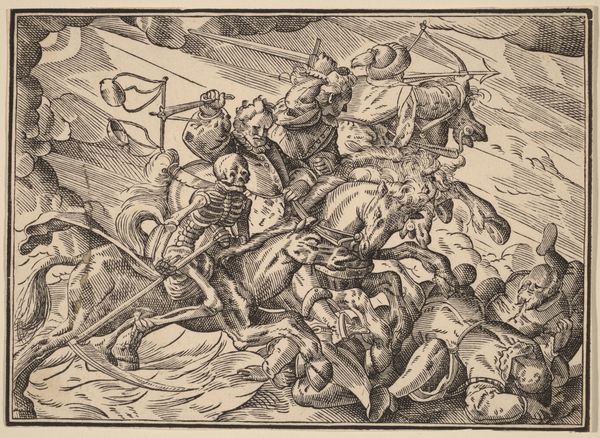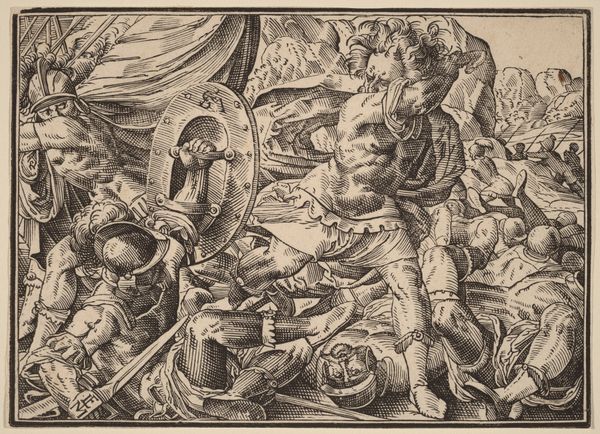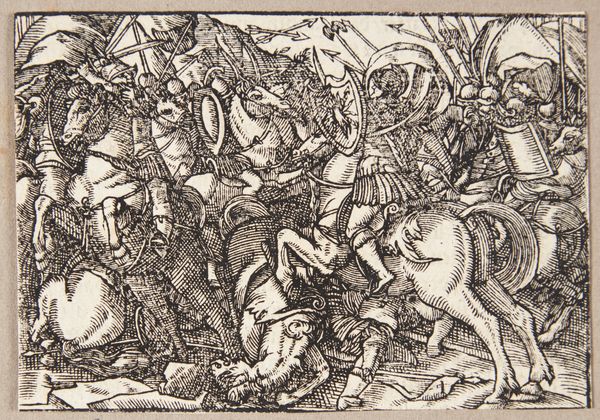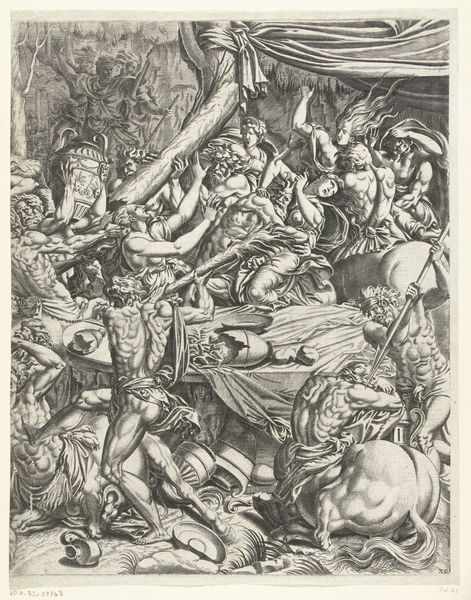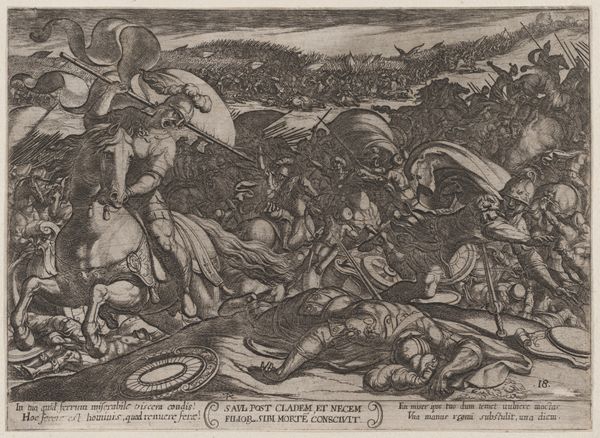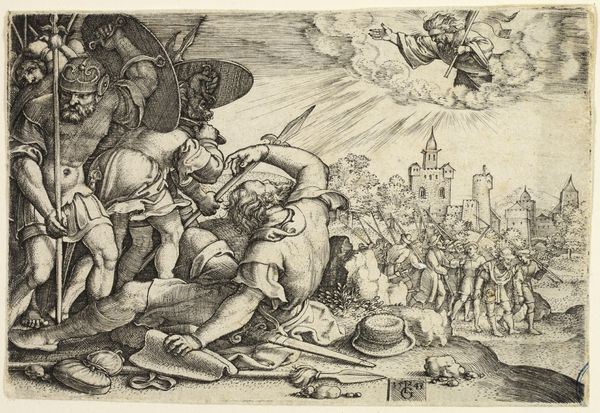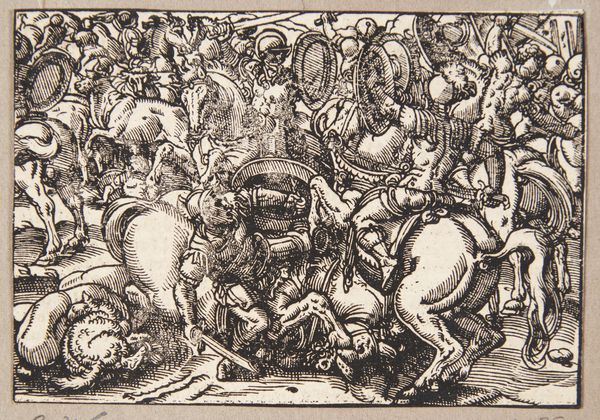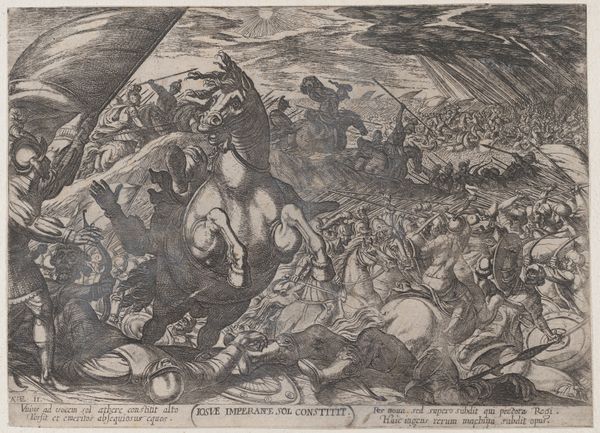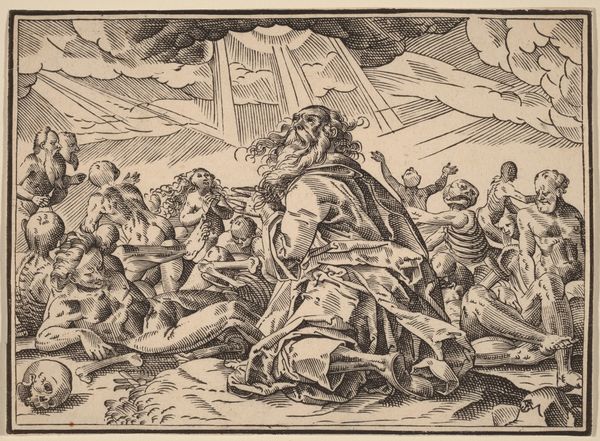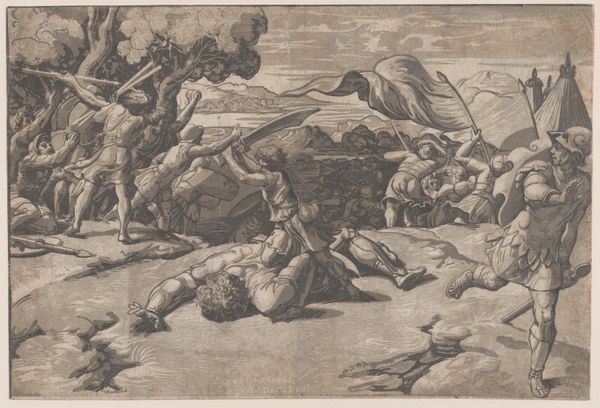
Christ Tells His Disciples of the Last Judgment Possibly 1630
0:00
0:00
print, engraving
#
narrative-art
#
baroque
# print
#
figuration
#
history-painting
#
engraving
Dimensions: sheet: 10.6 x 14.8 cm (4 3/16 x 5 13/16 in.)
Copyright: National Gallery of Art: CC0 1.0
Curator: I'm immediately struck by the chaos! It's incredibly dynamic, a jumble of figures rendered in stark black and white. There’s a raw energy to it. Editor: And quite purposefully so. What we’re seeing is Christoph Murer’s "Christ Tells His Disciples of the Last Judgment," a print likely from around 1630. The intensity you feel speaks to the artwork’s purpose during the Reformation and Counter-Reformation periods. It’s narrative art designed to impact viewers on a gut level. Curator: Absolutely. The visual language seems almost Medieval in its bluntness, even though this is the Baroque era. The figure wielding the sword, presumably an angel, doesn't carry any sort of idealized beauty; it is about graphic power and allegorical drama, using the story to impress upon the illiterate a moral argument. Editor: Indeed, prints like this had an important public role. The deliberate choices of imagery communicated complex theological ideas to a wide audience, during a time of social and religious upheaval, and the debate between Catholic and Reformist thinking. How would people have received this? Was this one artist’s take, or a standard interpretation? Curator: The way the artist packed so much drama into the piece really catches my attention, not just within the single figures depicted, but also between the clusters of onlookers to the side—which helps emphasize their complicity. Look at how the scene almost spills beyond the borders of the composition, the chaos reaching out to involve the viewer! That serpent, too. Do you see it as the symbol of deception? The visual motifs work on so many levels. Editor: Symbolism within a socio-historical frame; the artist using images and figures, as you so adeptly put it, to "involve the viewer", and even in some ways coerce them into feeling a sense of drama, foreboding and the ultimate message of religious text. Curator: So, what resonates most with you, considering this visual encoding of religious belief? Editor: It's how these easily disseminated images shaped religious consciousness. Now, after this viewing, I better understand why social mores developed in certain European sectors more easily than in others; art was involved as a messenger, both consciously and subconsciously to affect popular sentiment. Curator: I find it quite striking how Murer distilled such a profound concept into a medium known for its precision, achieving a unique kind of emotional intensity.
Comments
No comments
Be the first to comment and join the conversation on the ultimate creative platform.
